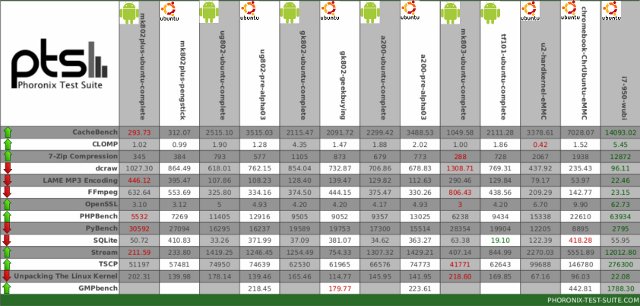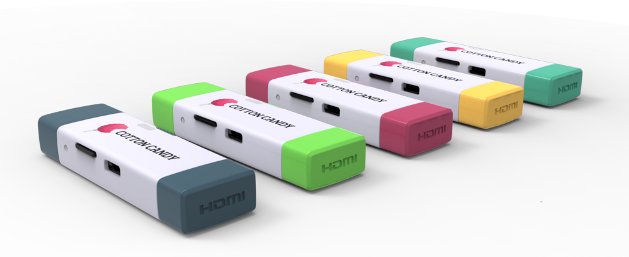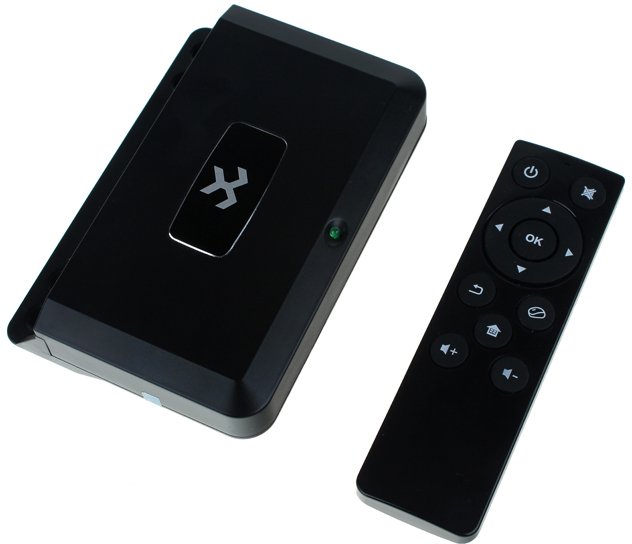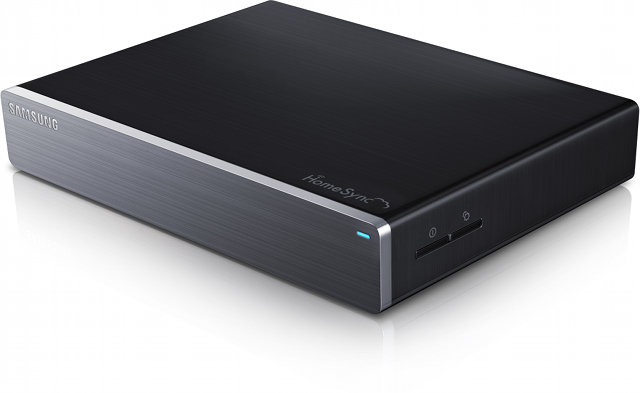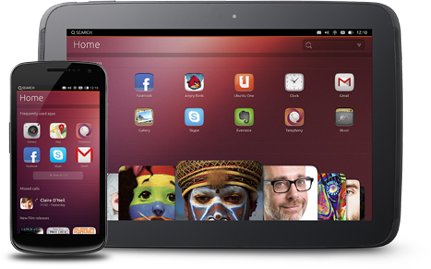Linaro 13.03 is now available, and features Linux Kernel 3.9-rc3 and Android 4.2.2. This month, Linaro has released their first Origen Quad Android image, as well as Tiny Android build for Arndale. The ALIP image listed in the download page is still based on Ubuntu 12.11, but as doc Bormental noticed earlier this month, the latest ALIP Quantal 13.03 image is available for download at https://releases.linaro.org/latest/ubuntu/quantal-images/alip. Some development tools (gcc, g++, vi, make..) are now included in Android, so you can develop and build natively from your Android device. Linaro has kept on cleaning the Linux kernel ARM tree for Exynos and ST Ericson SoCs. More work has been done on big.LITTLE for both IKS and HMP, as well as ARMv8 OpenEmbedded, and an initial GRUB port on ARM UEFI is now available. Here are the highlights of this release: Automation and Validation A simple CLI tool for communicating with […]
Mini PCs (MK802+, UG802, GK802 & iStick A200) Linux Performance Comparison
Ian MORRISON (linuxium) has tested Linux with several mini PCs powered by different processors. The main point of his tests was to evaluate the performance difference between running Ubuntu 12.04 natively, or in a chroot in Android using tools such as Complete Linux Installer. I previously tried Linux on Android in ODROID-X, and found the applications start time when running from an low-end SD card pretty dismal, and the graphics performance poor. Ian had a different approach, and decided to use a subset of Phoronix Suite benchmarks to compare different hardware / software combination and posted the results in “mini PCs” G+ community. There’s a lot of data, and analyzing the results is not really straightforward without spending some time looking at the data. In this post, I’ll explain how the tests have been conducted, explain the results and try to draw a conclusion. Mini PCs and other Hardware Under […]
ARMBRIX Zero / OPENBRIX Zero Board Cancelled
ARMBRIX Zero (renamed to OPENBRIX Zero), the cheapest ARM Cortex A15 board that was supposed to hit the market next month, won’t be produced anymore. Howchip has published a laconic notice to explain the cancellation: Dear Customers Due to a situation experienced by the ARMBRIX Company(www.armbrix.com), the production of its boards have been discontinued. At this time we ask for the understanding of our customers who have shared interest in the ARMBRIX zero/OPENBRIX zero product. Every PAYPAL payment will be refunded by next week. Refunds will take 3-5 business days to process. We apologize for this inconvenience, and would like to thank every customer that has appreciated the ARMBRIX/OPENBRIX zero product. The project owner cannot provide an explanation why this has been canceled (it’s probably confidential), but still offer people to contact him if they have project ideas for the board. That means the only Cortex A15 option is now […]
FXI Technologies Cotton Candy HDMI Stick To Fully Support Both Android and Ubuntu
FXI Technologies was the first company to ever show an HDMI TV dongle when they unveiled the Cotton Candy in November 2011. Since then, many Chinese companies started to provide similar products at lower cost, and the company further improved the Cotton Candy, which is still powered by Exynos 4210 (dual core Cortex A9), by making it even smaller, and getting rid of the internal flash in the process. As a memory refresher, here are the specifications of the Cotton Candy: SoC – Samsung Exynos 4210 dual core Cortex A9 + Mali-400MP4 System Memory – 1GB DRAM Storage – No flash, up to 64GB microSD Video Output – HDMI Connectibity Wifi 802.11b/g/n Bluetooth 2.1 + EDR USB – USB 2.0 male connector for power and connection to devices that supports USB mass storage + microUSB Video Codecs- 480p/720p/1080p Decode of MPEG4-SP/H.263/H.264 AVC/MPEG-2/VC1 Audio Codecs – MP3, AAC, AAC+, Real Audio […]
Linaro 13.02 Release with Linux Kernel 3.8 and Android 4.2.2
Linaro 13.02 is now available, and features Linux Kernel 3.8 and Android 4.2.2. The biggest news this month is probably the first release of a preliminary ARM64 Debian/Ubuntu Raring image. Other noticeable items include work on ARMv7 KVM, more improvements to OpenEmbedded ARMv8 implementation, as well as big.LITTLE MP implementation, and some modifications to the toolchain for Cortex A7 support. Origen images are not available for download this month, and there’s still no ALIP images since they have disappeared since Linaro upgraded to Ubuntu Quantal. Here are the highlights of this release: Android AOSP master build for Galaxy Nexus has been setup All the platforms have been updated to 4.2.2 Support for lava-test-shell has been added to linaro-android-build-tools. Developer Platform CI bring up: ARMv7 KVM – Add Arndale hypervisor patch to u-boot-linaro. CI bring up: Arndale – Add Arndale image reports to LAVA, Enable and verify UEFI support in the […]
F9 Android Set-Top Box Features Samsung Exynos 4412 Processor
Geekbuying just announced they would be soon selling a tiny Android set-top box powered by Samsung Exynos 4412 quad core processor. This media player will come with 1 to 2 GB RAM, 8G to 16G flash, and run Android 4.0 (ICS), upgradeable to Android 4.1 or 4.2. Here are the specifications of this device: SoC – Samsung Quad Core Cortex-A9 Exynos 4412 @ 1.6GHZ + Mali-400 Quad Core GPU System Memory – 1GB RAM (optionally 2G) Storage – 8GB flash (optionally 16GB) + microSD slot Connectivity – WIFI 802.11 b/g/n Video Output – HDMI Audio Codec – MP3, WMA, APE, FLAC, OGG, WAV, etc. Video Containers – AVI, MKV(XVID/px/H.264), MOV, TS, M2TS, RM/RMVB, FLV, 3GP, MPEG, DAT, MP4 USB – 2x USB 2.0 Power Supply – 5V/2A Weight – 109g The device will come with an HDMI cable, a power adapter, a 2.4Ghz remote control, and a user guide. Geekbuying […]
Samsung HomeSync Media Server Comes with a Dual Core Processor, 1TB Storage
Yesterday, Samsung announced the HomeSync, a media server featuring a dual core processor at 1.7 GHz, 1GB RAM, 8GB eMMC, and a 1TB hard drive. HomeSync is said to be running a modified version of Android Jelly Bean. Here are HomeSync specifications: Processor – Dual Core @ 1.7GHz (I’d guess it should be the Exynos 5250, but why all the mystery?) System Memory – 1GB DDR3 Storage – 8GB eMMC + 1TB HDD Connectivity LAN – Gigabit Ethernet WiFi – 802.11 b/g/n 2.4GHz & a/n 5GHz HT40 2×2 MIMO Channel Bonding Bluetooth – V4.0 USB – 2x USB 3.0 Host, 1x Micro USB (11pin) Video Output – HDMI out Audio – Optical Audio (Audio Amp. Connection) Video Codec – H.264, H.263, MPEG4, VC-1, Sorenson Spark, WMV7/8, MP43, VP8, DivX Audio Codec – MP3, AAC LC/AAC+/eAAC+, WMA 9std/10pro/Lossless, FLAC, Vorbis, AMR-NB/WB, Wav, Mid, AC-3 DRM – HDCP 1.3/2.1, Playready, Widevide, Trustzone […]
Ubuntu Touch Developer Preview Is Now Available for the Galaxy Nexus and Nexus 4, 7 and 10 Devices
As promised with the announcement of Ubuntu on Tablets, Canonical released a developer preview of Ubuntu 12.10 for smartphones and tablets that can be installed in Galaxy Nexus and Nexus 4 smartphones, as well as Nexus 7 and Nexus 10 tablets. It is an experimental development snapshot that could potentially brick your device. Many features are still not available but you should be able to access the following: Shell and core applications Connection to the GSM network (on Galaxy Nexus and Nexus 4) Phone calls and SMS (on Galaxy Nexus and Nexus 4) Networking via Wifi Functional camera (front and back) Device accessible through the Android Developer Bridge tool (adb) You’ll be able to reinstall Android after trying it out, but all your data will be lost, unless you use apps such as Titanium Backup. The instructions to install Ubuntu 12.10 Touch are available on Canonical website, and you’ll basically […]



